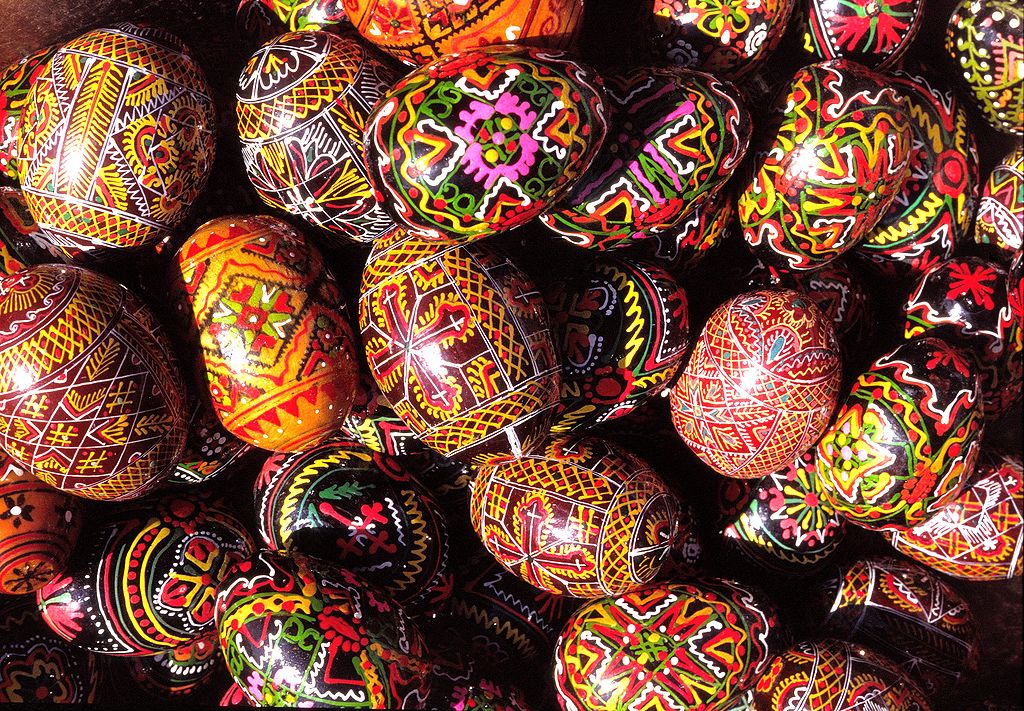

Easter eggs are a massive part of modern Easter celebrations. They are strongly associated with the Easter bunny, another famous symbol of this celebration. However, given that Easter is supposed to celebrate Jesus’ resurrection, and Easter eggs are not mentioned anywhere in the Bible, what is their origin?
First, let us examine, “What are Easter eggs?” They have been a part of Easter celebrations for centuries and have taken on several forms.
Today, they are generally chocolate, often much bigger than normal chicken eggs. Parents tend to give them to children as part of the Easter celebrations. One common practice is for parents to hide the eggs for the children to find as part of a ‘hunt’. The Easter bunny is supposedly responsible for bringing and hiding the eggs.
In the past, real eggs were used. Today, the chocolate eggs are common, as are plastic eggs filled with sweets. Even centuries ago, people elaborately decorated real eggs.
At first, it seems this cannot possibly be connected to genuine Christian traditions. However, some modern sources claim that eggs came to be associated with Easter due to the Lenten fast.
The Lenten fast is the 40-day period before Easter in which one gives up certain foods. Historically, most foods were avoided during this period, with only bread and vegetables, or sometimes just bread alone, being eaten.
This means that members of the Church were allowed to eat eggs again after Lent. For this reason, they placed great emphasis on eggs, thus making them a symbol of Easter.
Furthermore, many sources claim that the egg supposedly represents Jesus’ tomb. According to one source:
“Easter eggs are used as a Christian symbol to represent the empty tomb. The outside of the egg looks dead but inside there is new life, which is going to break out.”
Additionally, the fact that the eggs are painted red is supposed to represent the blood of Christ.
However, when we examine these points in more detail, it is evident that many are retrospective explanations for customs that already existed independent of authentic Christian traditions.
For instance, there were many other foods that members of the Church could not eat during Lent. Eggs were merely one of many, many other foods that were off-limits during that period. Therefore, there is no reason to associate eggs with Easter at the end of Lent.
What about the concept of painting the eggs red to represent the blood of Jesus? There are a few problems with this. For one thing, some of the very earliest examples of decorated Easter eggs did not use the color red. In the 13th century, King Edward of England is recorded as having hundreds of Easter eggs decorated with gold.
Furthermore, the practice of painting eggs red pre-dates Christianity. This shows that its original meaning cannot have had anything to do with the blood of Christ.
Given these problems with the explanation that ties them to Christian traditions, another answer is much more obvious and better supported by the evidence. This is the theory that claims Easter eggs have a pagan origin.
As we have just seen, decorating eggs dates back to ancient times, long before Christianity. It was a well-established part of numerous pagan religions around the world. The egg usually represented rebirth, making it a fitting symbol for springtime celebrations.
Many scholars believe that the Easter egg ultimately comes from the ancient Persian practice of decorating eggs during the festival of Nowruz. This festival took place during the spring festival. This custom of decorating eggs at springtime appears to have spread from the Persians to the eastern Christians of Mesopotamia.
Scholars believe the custom spread west from there, eventually reaching European churches. Interestingly, the ancient Egyptians also decorated eggs at springtime. The origin of Easter eggs might go back to Egypt and Persia independently, but both cultures influenced the churches in the same way.
